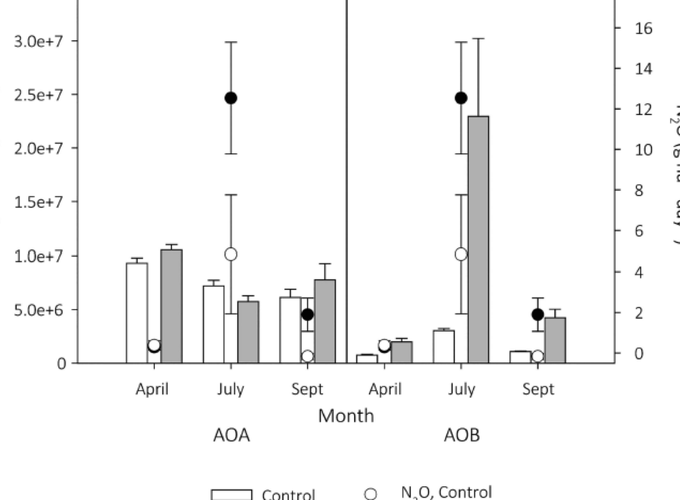Ammonia‐oxidizing bacteria are the primary N2O producers in an ammonia‐oxidizing archaea dominated alkaline agricultural soil
Abstract
Most agricultural N2O emissions are a consequence of microbial transformations of nitrogen (N) fertilizer, and mitigating increases in N2O emission will depend on identifying microbial sources and variables influencing their activities. Here, using controlled microcosm and field studies, we found that synthetic N addition in any tested amount stimulated the production of N2O from ammonia-oxidizing bacteria (AOB), but not archaea (AOA), from a bioenergy crop soil. The activities of these two populations were differentiated by N treatments, with abundance and activity of AOB increasing as nitrate and N2O production increased. Moreover, as N2O production increased, the isotopic composition of N2O was consistent with an AOB source. Relative N2O contributions by both populations were quantified using selective inhibitors and varying N availability. Complementary field analyses confirmed a positive correlation between N2O flux and AOB abundance with N application. Collectively, our data indicate that AOB are the major N2O producers, even with low N addition, and that better-metered N application, complemented by selective inhibitors, could reduce projected N2O emissions from agricultural soils.
